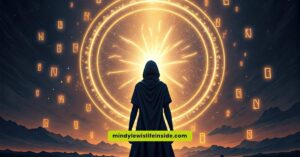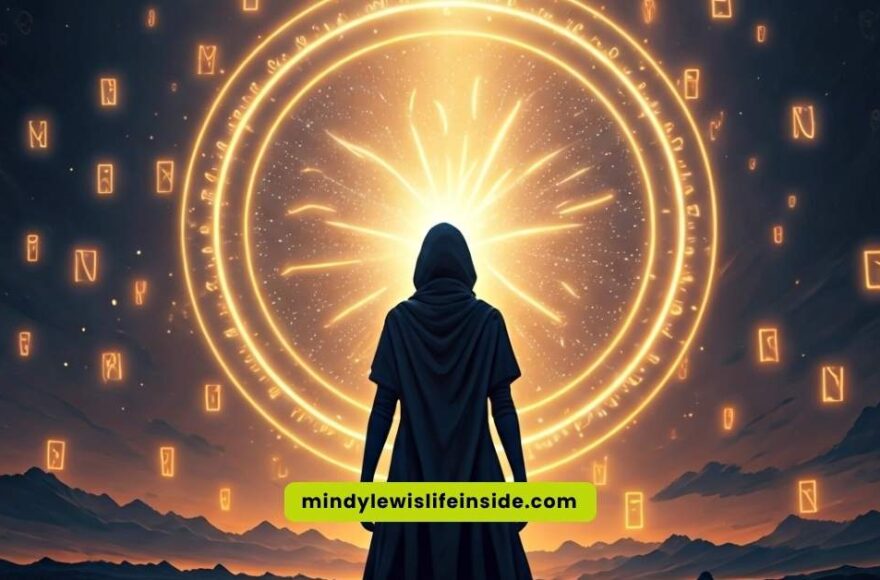Is Divine Intervention Real? New Scientific Evidence Questions Coincidence Theory

As an Amazon Associate, I earn from qualifying purchases
Is divine intervention real or just a coincidence? When behavioral psychologist B.F. Skinner observed his pigeons in 1948. he witnessed what appeared to be superstitious behavior- one bird turning in its cage, another swinging its head like a pendulum. I find it fascinating how these actions mirror our human tendency to see patterns where none exist, raising questions about divine synchronicity in our lives.
Despite challenges to Skinner’s interpretation, his reinforcement model helps explain how we interpret seemingly miraculous events. According to the Merriam-Webster Dictionary, a miracle is “an extraordinary event manifesting divine intervention in human affairs,” while coincidence is simply “the occurrence of events that happen at the same time by accident but seem to have some connection”. The meaning of divine intervention varies across cultures, but the signs people report often involve improbable timing or unlikely circumstances.
When examining the statistical probability of rare events, consider this surprising fact: with just 23 people in a room, there’s a 50% chance two will share the same birthday. This birthday paradox demonstrates how mathematical reality often contradicts our intuition about what constitutes a miracle. I’ve always been intrigued by how our brains are wired to find meaning in random events- is what we perceive as divine intervention real or simply our minds creating patterns?
Throughout this article, I’ll explore the scientific evidence, psychological factors, and empirical analysis that might help answer this compelling question.
Defining Divine Intervention and Coincidence
Image Source: The Logic of Science
The concept of divine intervention fundamentally represents a higher power’s direct involvement in human affairs. In religious contexts, it signifies God or deities actively altering circumstances or outcomes that would otherwise follow natural courses. For Christians, divine intervention manifests through visions and miracles, especially during crises or in response to prayers. In secular discourse, the term has evolved to describe any fortuitous event guided by a seemingly greater force—particularly troubled situations that unexpectedly resolve well.
Furthermore, divine intervention differs from coincidence in several crucial ways. Coincidence refers to events happening simultaneously by accident yet appearing connected. In comparison, miracles specifically involve extraordinary occurrences that defy natural laws and scientific explanation. This distinction becomes clearer through probability analysis—coincidences occur against long odds but remain within the realm of mathematical possibility, whereas miracles fundamentally contradict established physical laws. People who maintain faith in a higher power often interpret synchronistic events as miraculous, whereas skeptics typically label them as luck or random chance.
Interestingly, reports of divine intervention share common elements across various cultures and belief systems. These include miraculous healings, answered prayers, prophetic dreams, and unexplainable coincidences. Natural phenomena serving as divine signs also appear consistently throughout religious texts—from the parting of the Red Sea in Judaism to Krishna’s interventions in Hindu traditions. Additionally, personal encounters with angels or divine messengers represent another universal pattern.
The challenge in identifying genuine divine intervention lies in distinguishing it from random coincidence; unlike coincidences which lack apparent meaning, divine signs typically convey a sense of purpose or guidance. Though manifestations may differ culturally, the experience of perceiving supernatural assistance transcends geographical boundaries.
Scientific Analysis of Claimed Divine Events
Statistical analysis reveals surprising insights when examining seemingly miraculous occurrences. Understanding probability remains crucial for distinguishing between true divine signs and random coincidence.
Statistical probability in rare events: The birthday paradox
The birthday paradox perfectly illustrates how our intuition about probability often fails us. Remarkably, with just 23 people in a room, there’s approximately a 50% chance two share the same birthday. This counterintuitive result occurs because we’re not making just 23 comparisons but 253 possible pairs. Consequently, what seems miraculous often aligns with mathematical reality once properly analyzed.
Apophenia and pattern recognition in the human brain
Our brains naturally seek patterns—even in randomness. Apophenia, the tendency to perceive meaningful connections between unrelated things, was first identified by psychiatrist Klaus Conrad as a feature of early schizophrenia. However, this phenomenon exists throughout the general population. For instance, people regularly see faces in inanimate objects (pareidolia) or believe they notice patterns in lottery numbers. This natural tendency helps explain why many interpret random events as divine signs.
Baader-Meinhof phenomenon and selective attention
The Baader-Meinhof phenomenon (frequency illusion) involves two cognitive processes: selective attention and confirmation bias. After learning something new, our brains subconsciously prioritize it, making us notice it more frequently. Subsequently, confirmation bias leads us to believe its actual frequency has increased. This explains why, after praying about a specific matter, relevant “signs” suddenly appear everywhere.
Case study: Scarab beetle and Jung’s synchronicity
Jung’s famous scarab beetle case demonstrates synchronicity in action. As Jung’s patient described dreaming of a golden scarab, a similar beetle appeared at his window. Jung viewed this as a meaningful coincidence rather than a mere chance. Yet analysis reveals the beetle was common in that area, and Jung himself actively facilitated the “coincidence”.
Empirical review of ‘heaven is for real’ type claims
Near-death testimonies claiming glimpses of heaven provide compelling but problematic evidence. Stories like “Heaven Is for Real” resonate because they address the universal human longing for immortality. Nevertheless, similar accounts exist across various religions, often conforming to cultural expectations. Essentially, these experiences reflect human psychology rather than definitive proof of divine realms.
Psychological and Evolutionary Roots of Belief
Image Source: Dreamstime.com
Our evolutionary history has equipped us with cognitive tools that naturally incline us toward belief in supernatural explanations. The question “Is divine intervention real?” might actually be explored through how our minds evolved to process information.
Cognitive dissonance and postdiction in faith-based reasoning
When faced with evidence contradicting deeply-held beliefs, people experience mental tension called cognitive dissonance. To resolve this discomfort, believers often reinterpret events to align with existing beliefs instead of changing those beliefs.
This explains why religious movements persist even after failed prophecies. In fact, commitment to a belief makes followers work harder to protect it from dissonance. People typically make one of four choices to reduce this tension: change beliefs, reinterpret contradictory information, augment explanations, or minimize the source of dissonance.
Survival advantage of pattern detection in early humans
Pattern recognition evolved as a crucial survival mechanism. Those who could identify predator signs or differentiate between edible and poisonous foods survived to pass on their genes. Our brains developed specialized “innate cognitive processors” like the Agency Detection Device that predisposes us to perceive invisible agents under certain conditions. Moreover, this heightened pattern-seeking offered evolutionary advantages:
- Recognizing environmental threats promoted survival
- Identifying temporal patterns (seasons, celestial movements) aided planning
- Social pattern recognition facilitated group cooperation
Emotional reinforcement and confirmation bias in miracles
Confirmation bias—our tendency to favor information supporting existing beliefs—persists because it actually maximizes rewards in certain situations. Interestingly, neuroimaging reveals that when individual opinions align with group judgments, activity increases in the brain’s reward centers. This creates a self-reinforcing cycle where perceiving divine intervention triggers pleasurable neurological responses, making believers more likely to interpret future events as miraculous.
Social conformity and belief reinforcement in groups
Social influence fundamentally shapes our beliefs through conformity processes. Studies show that disagreement with group opinions activates the rostral cingulate zone while decreasing activity in the nucleus accumbens—brain regions involved in conflict processing and reward expectation, respectively.
This neurological response predicts subsequent conformity behavior. Indeed, shared religious beliefs create powerful group cohesion through common worldviews and moral guidelines, ultimately reinforcing individual faith through collective participation.
Quantum Theories and Metaphysical Interpretations
Image Source: Ben Sternke
Quantum physics opens extraordinary possibilities for understanding the potential mechanisms behind divine intervention. Beyond psychological explanations, these theories offer frameworks where divine action and natural law might coexist.
Quantum entanglement and the illusion of acausality
Quantum entanglement reveals connections that defy classical physics. Einstein famously called this phenomenon “spooky action at a distance,” as separated particles remain instantaneously connected regardless of distance. This nonlocal connection violates Einstein’s causality principle, which prohibits faster-than-light communication.
Interestingly, experiments have confirmed that entanglement is real, challenging our understanding of cause and effect. Some physicists suggest this could provide space for divine action without violating physical laws. As one researcher notes, “God has the ability to fidget with quantum physics without anybody’s knowledge”.
Holographic universe theory and divine synchronicity
The holographic principle proposes that all information in any region of space exists on its surface. First developed by physicists David Bohm and Karl Pribram, this theory suggests every point in the universe connects to every other point. Such interconnectedness helps explain phenomena like synchronicity, remote viewing, and precognition. Moreover, the holographic model suggests that seemingly unrelated events may share hidden connections, possibly explaining what some perceive as divine signs.
Is divine intervention real according to the Bible?
Biblical texts unequivocally affirm divine intervention throughout history. Scripture portrays God as sovereign over all creation, actively causing or preventing events. Divine intervention manifests through miracles and seemingly random occurrences that guide believers. Although God intervenes, the Bible doesn’t instruct followers to seek hidden messages in everyday events. Instead, believers are directed to God’s Word for guidance.
Spiritual frameworks: Hindu lila and Christian providence
Various spiritual traditions offer complementary perspectives on divine action. Christian theology emphasizes God’s sovereignty over suffering, victories, calling, futures, and even sin. God works “all things according to the counsel of his will”. Meanwhile, Hindu philosophy presents lila—divine play—as a framework for understanding seemingly random events as part of cosmic consciousness.
Conclusion
Throughout this exploration of divine intervention, we’ve examined compelling evidence from multiple disciplines that challenges our understanding of coincidence. Science offers explanations for many supposedly miraculous events through statistical probability and cognitive processes. The birthday paradox, for instance, demonstrates how mathematical reality often defies our intuition about randomness.
Psychological factors undoubtedly play a significant role in our perception of divine signs. Our brains evolved specifically to detect patterns for survival, sometimes finding meaning where none exists. Additionally, cognitive mechanisms like apophenia and the Baader-Meinhof phenomenon explain why we notice “signs” that align with our beliefs while overlooking contradictory information.
Nevertheless, quantum physics presents fascinating possibilities where divine action might occur without violating natural laws. Quantum entanglement and holographic universe theory suggest interconnectedness beyond our conventional understanding of causality. These frameworks create a theoretical space where science and faith might coexist rather than conflict.
The question “is divine intervention real?” therefore remains at the intersection of science, psychology, and personal belief. While statistical analysis can explain many coincidences, it cannot definitively rule out divine agency working through natural processes. Each person must eventually weigh evidence against experience.
Though science explains much of what we perceive as miraculous, human experience consistently reaches beyond purely materialistic explanations. Perhaps the most balanced perspective acknowledges both our psychological tendencies toward magical thinking and the genuine mystery that remains at the edges of scientific understanding.
What appears as divine intervention to one person may seem mere coincidence to another. Ultimately, this tension between scientific explanation and transcendent meaning reflects the fundamental human search for purpose in an often unpredictable world. Whether through scientific inquiry or spiritual frameworks, we continue seeking patterns that help us navigate life’s uncertainties with greater clarity and meaning.
Key Takeaways
This comprehensive analysis examines whether divine intervention is real or simply a coincidence, exploring scientific evidence, psychological factors, and quantum theories that challenge our understanding of miraculous events.
• Statistical probability often explains “miracles” – The birthday paradox shows 23 people have a 50% chance of sharing birthdays, revealing how mathematical reality contradicts our intuition about rare events.
• Our brains are evolutionarily wired to find patterns – Apophenia and the Baader-Meinhof phenomenon explain why we perceive divine signs in random events as survival mechanisms from early human development.
• Cognitive biases reinforce belief in divine intervention – Confirmation bias and emotional reinforcement create self-perpetuating cycles where believers interpret future events as miraculous, supported by neurological reward responses.
• Quantum physics opens theoretical space for divine action – Quantum entanglement and holographic universe theory suggest interconnectedness beyond classical causality, potentially allowing divine intervention without violating natural laws.
• The question remains at the intersection of science and faith – While statistical analysis explains many coincidences, it cannot definitively rule out divine agency working through natural processes, leaving room for personal interpretation.
The tension between scientific explanation and transcendent meaning ultimately reflects humanity’s fundamental search for purpose in an unpredictable world, where both rigorous inquiry and spiritual frameworks help us navigate life’s uncertainties.
FAQs
What is divine intervention?
Divine intervention refers to a higher power’s direct involvement in human affairs, often manifesting as extraordinary events or coincidences that seem to defy natural explanations. It’s a concept found in many religious and spiritual traditions.
How does science explain seemingly miraculous events?
Science often explains apparently miraculous events through statistical probability, cognitive biases, and natural phenomena. For example, the birthday paradox demonstrates how mathematical reality can contradict our intuition about the likelihood of rare events.
Can quantum physics provide a basis for divine intervention?
Some theories in quantum physics, such as quantum entanglement and the holographic universe theory, suggest interconnectedness beyond classical causality. While these don’t prove divine intervention, they open theoretical possibilities for how it might occur without violating natural laws.
Why do people tend to see patterns or divine signs in random events?
Humans are evolutionarily wired to detect patterns as a survival mechanism. Psychological phenomena like apophenia (seeing meaningful patterns in random data) and confirmation bias can lead people to interpret coincidences as divine signs.
How do different belief systems view divine intervention?
Various spiritual traditions offer different perspectives on divine action. For instance, Christian theology emphasizes God’s sovereignty over all events, while Hindu philosophy presents the concept of lila, or divine play, to explain seemingly random occurrences as part of cosmic consciousness.
As an Amazon Associate, I earn from qualifying purchases









